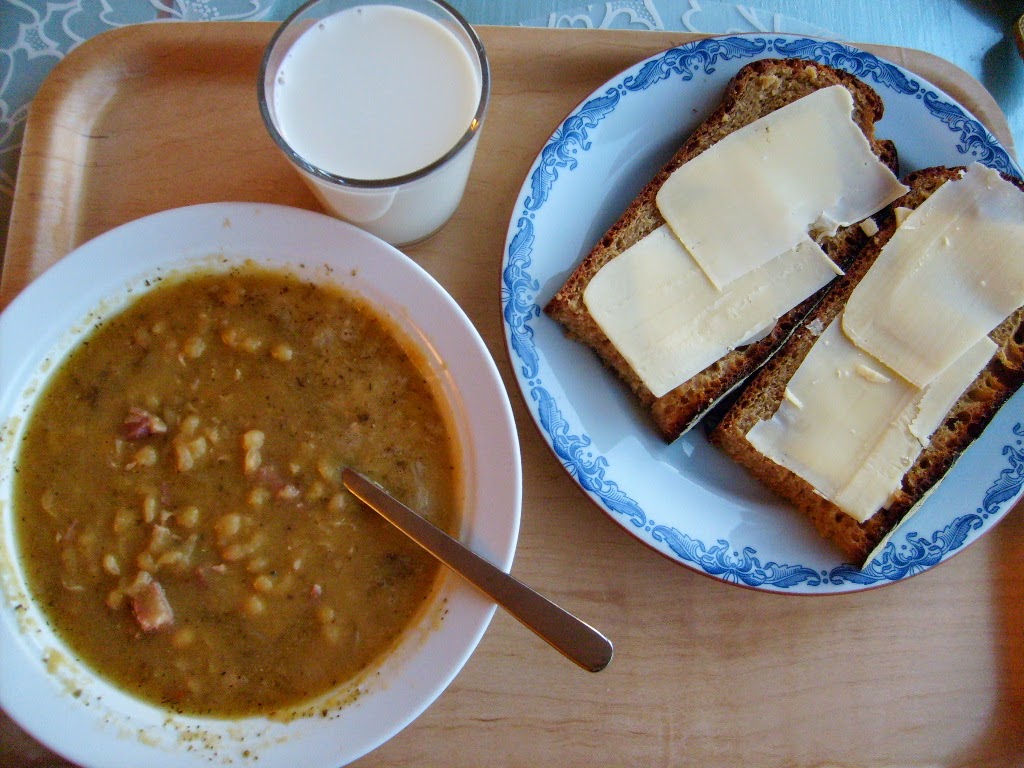I bake most of my own bread. I am a bread-lover, and what can I say? Once you start, it is really hard to go back to the store-bought stuff. Also, Sweden isn´t exactly known for its bread culture. When my father came to Sweden, he absolutely loathed the Swedish sweet loaf (which this is an excellent example of), and the German colony where he lived rejoiced when they found a bakery (miles and miles away, but closer than Germany) that made something called "German loaf" which was a sour-dough bread, baked in an old stone oven, with a chewy crust that resembled nothing I have tasted since. He bought a special, large freezer and filled it every chance he had. A family of six, we would finish one loaf a day. And I suppose that is why I love this bread so much - I only had it at grandma´s, so the taste, for me, is full of holiday feel and that special grandma love.
As it is, I am a pretty lazy sort of person. Or efficient, as the husband would say. I really don´t have time to spend hours and hours in the kitchen and messing with my hands in dough isn´t my idea of fun (although I know plenty of people who thinks that´s the point of the whole process). So, when I found this wonderful way of baking bread in an article in the Guardian a few years back, I adopted it immediately. I have hardly tasted a store loaf since.
I bake a large loaf on 1 liter of water, which I then divide into four pieces, freezing three for later. I also always use dry yeast, which my mum-in-law slightly frowns at, but really, it´s what you get used to. That´s the thing really, to becoming a prolific baker: get used to one way of doing it that suits you and adapt the recipes to your particular process.
Water temperature is crucial. 45- 50 degrees Celsius, which is a lot warmer than you would use for fresh yeast (and I understand that in many countries fresh yeast isn´t really available everywhere, as it is here). What I do is I take cold water from my tap (10 degrees) and mix with boiling hot water at a ratio of 3-2. So, typically 600 ml of cold + 400 ml of hot. Which makes perfect. In my house. If I use some left-over cream, say, from the fridge, which is at a temperature of 4-5 degrees, I´d mix it 50-50 with boiling water.
For grandma´s recipe, only one type of flour is used, which we call rågsikt. It´s a 50-50 mix of sifted rye and wheat flour that´s typical to Sweden. Of course, you could make your own mix. I put some flour in my bowl, add 2 envelopes/bags (12 g each) of yeast, 3 eggs, 300 ml of brown sugar (that´s one heaped cup), 1 tablespoon of salt, and 1 liter of warm water. I use the dough whisks for the electric mixer, and keep adding flour until it looks a bit like whipped cream. Not liquid, but not as dry as a regular bread dough, either. Cover with a towel and leave to rise for 40 minutes.
When it has risen, pour the whole thing in a roasting pan. I have a nice, large one that´s about 40 x 35 cm (15 x 14 inches), which I line with non-stick oven paper. I powder it with flour, using a teaball, cover it with the towel and leave for 25 minutes, also turning the oven to 200 degrees Celsius (about 400 Fahrenheit). When it has risen some more, I prick the dough and shove it in the oven for 50 minutes. Every oven is special, so one just has to experiment.
It takes a few hours to cool, and you really should let it cool properly before you put a knife to it; it turns into sticky crumbles if you don´t. Grandma actually used to make buns of this, but it tastes the same whatever shape you make it in.
It is excellent with butter and hard cheese, served perhaps with a meat soup of some kind. Or, as I did yesterday, with a yellow peasoup from the freezer. And a glass of milk, of course; because I´m Swedish!







No comments:
Post a Comment